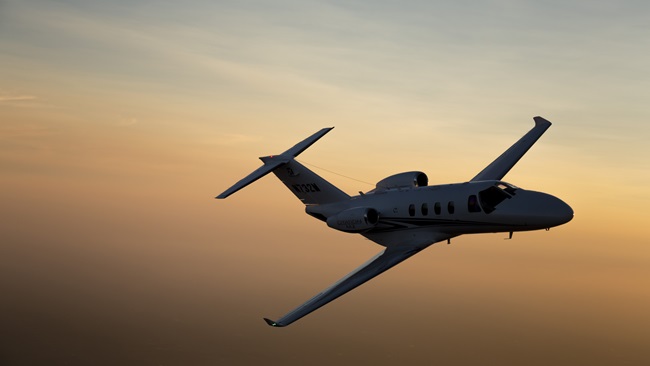From the editor: Going big
New offerings for $40 million and up

These were the Global 5500 and Global 6500. Also on view was Bombardier’s Global 7500, the new name for what was once called the Global 7000.
Owners of lesser jets, look upon this hardware and despair! The $72 million Global 7500 has a 7,700-nautical-mile maximum range (the 7000 could only do 7,400 nm), fly-by-wire flight controls, a top speed of Mach 0.925, and enough room for 12 lucky passengers. The seats get special mention. “Nuage” (cloud) seats articulate every which way, and even tilt back—sort of like a dentist’s chair. A Nuage lounge chair can even morph into a bed.
The new Global 5500 and 6500 have maximum ranges of 5,700 and 6,600 nm, respectively; boast Mach 0.90 maximum cruise speeds (in which case you won’t realize those maximum ranges); and price tags of $46 million and $56 million.
Competing with the new Globals is Gulfstream’s G500 (5,200 nm, $45.5 million), G600 (6,200 nm, $57.9 million), and G650ER (7,400 nm, $70.1 million); and Dassault’s Falcon 6X (5,500 nm, $47 million) and 8X (6,400 nm, $70.1 million). Of all the above, only the Dassault 8X and Gulfstream 650ER are in production. The others are still in development. And there was no mention of any developments on Bombardier’s biggest project—the 9,000-nm Global 8000—which had its first flight two years ago.
More new airplanes mean more new technology, more aspirational designs, and more efficiencies.To some this may all sound like wretched excess. But it’s yet another affirmation of professional strength, a sound economy, and the value of a dedicated fleet operated by a flight department. In Bombardier’s case, it might also help to have a little financial relief from Airbus’s 51-percent stake in building Bombardier’s C-series airliners, as well as having the Quebec government pitch in with the development costs.
But this new field of eight luxurious large-cabin airplanes carries other implications. One, of course, is a repudiation of airline travel—even in first class. Another is that for all to succeed there has to be a sufficient number of customers willing and able to step up to these alpha symbols of private aviation. Another 2008-style downturn could kill demand, making “super-midsize” jets attractive alternatives. Attracting a sufficient number of pilots to fly the growing fleet of business jets is another item. Crewing a corporate airplane is different than airline flying. Instead of simply entering the flight deck, closing the door behind you, and flying the airplane, duties often extend to customer service—and supervising all aspects of the airplane’s mission.
All that aside, more new airplanes mean more new technology—like the Rolls-Royce Pearl 15 engines powering the Global 6500—more aspirational designs, and more efficiencies. New technology creates its own demand. And it’s these large “barges” that help perpetuate demand for the smaller jets that high-rolling clients leave behind.
Email [email protected]



